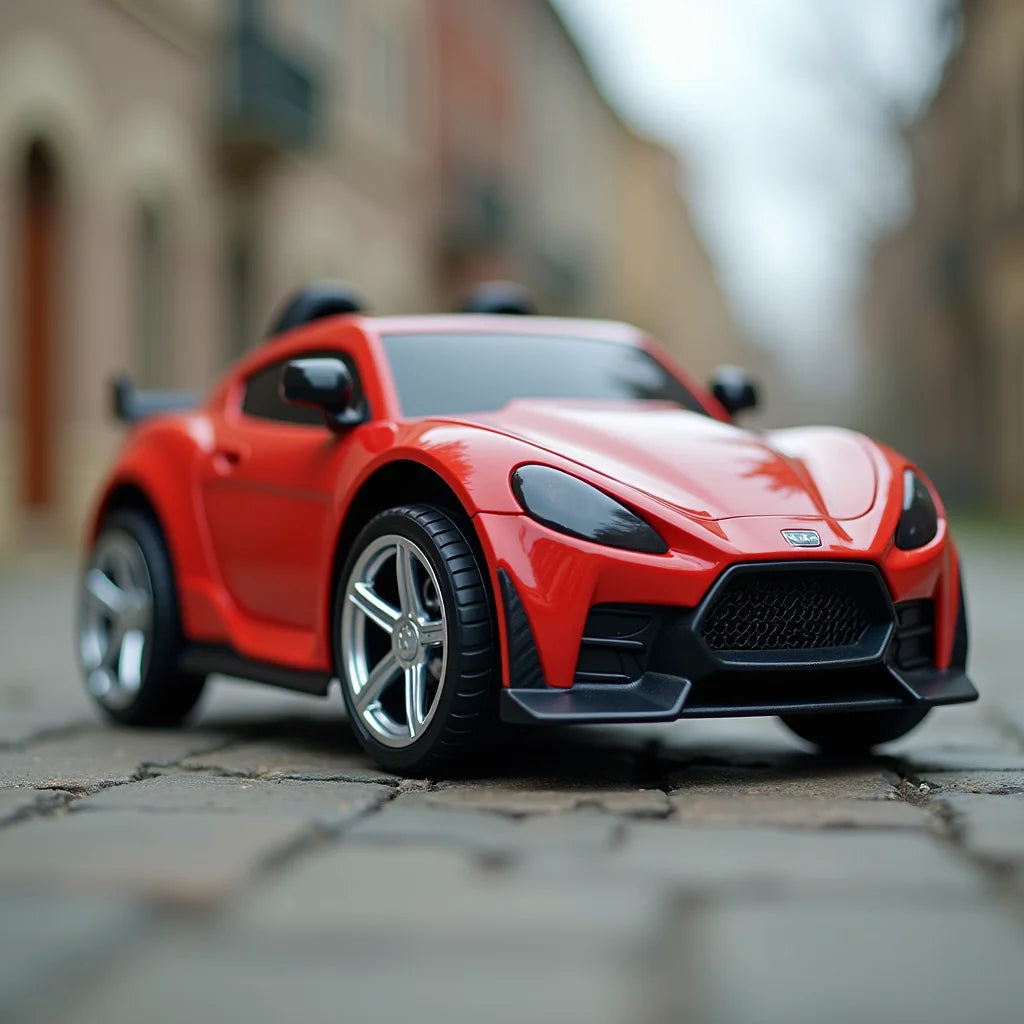
Electric Toy Cars Buying Checklist for Smarter Play
Share
Updated on: 2025-09-26
Table of Contents
- Electric Toy Cars: What They Are and Why They Matter
- Pros and Cons of Electric Toy Cars
-
Step-by-Step Guide to Choosing Electric Toy Cars
- Step 1: Clarify your child’s needs and play space
- Step 2: Pick a type — remote control or ride-on
- Step 3: Prioritize safety features
- Step 4: Compare batteries and charging
- Step 5: Review controls, speed, and terrain
- Step 6: Check size, weight limit, and assembly
- Step 7: Plan care, maintenance, and storage
- Electric Toy Cars: Wrap-Up and Shopping Tips
- Electric Toy Cars Questions and Answers
- About the Author on Electric Toy Cars — TURBO DRIFT™ TURBO DRIFT™
Electric Toy Cars: What They Are and Why They Matter
Electric Toy Cars bring imaginative driving to life for children and families. Whether you are comparing battery-operated toy cars, battery-powered toy cars, or considering ride-on electric cars for kids, this guide aims to make your choice simple and reassuring. You will find practical advice to match a child’s age, skill, and space, and helpful context on remote control cars for hands-on fun. We will also touch on safety, charging, and ways to get more value from each play session.
There are two broad categories. First, remote control cars are smaller, nimble, and great for indoor and outdoor tracks. Second, ride-on cars let kids sit and steer, often with parental remotes for added supervision. Many families like electric toy cars with parental remote control and seat belts because they balance independence with gentle oversight.
As you read, you will see how to compare speed modes, durability, and terrain handling. You will also find a step-by-step guide to narrowing choices by size, battery type, and features so you can pick with confidence and kindness.
Pros and Cons of Electric Toy Cars
- Pros — Imagination and skill building: Electric Toy Cars encourage coordination, planning, and gentle risk assessment. Remote control cars help fine motor skills. Ride-on models support spatial awareness and early rules of the road during supervised play.
- Pros — Flexible options for different ages: From simple push-button remotes to multi-speed ride-ons with seat belts, you can select features that suit the child’s readiness without overwhelming them.
- Pros — Indoor and outdoor play: Compact RC cars handle living rooms and driveways, while larger ride-ons work in yards and smooth paths. Many models offer rubber tires or spring suspension to soften bumps.
- Pros — Parental peace of mind: Models with a parent remote, speed limiters, and soft-start acceleration help you supervise more comfortably.
- Cons — Battery care: Battery-powered toy cars require charging and occasional replacement. Planning charge cycles and storage helps protect performance.
- Cons — Space needs: Ride-on cars need storage room and a safe driving area. If space is tight, a smaller RC model may be more practical.
- Cons — Weight and assembly: Some ride-ons are heavy and require assembly. Reviewing the manual before purchase can prevent surprises.
- Cons — Surface limits: Standard tires may not grip wet grass or loose gravel. If you expect varied terrain, look for traction tires and modest top speeds.
Step-by-Step Guide to Choosing Electric Toy Cars
Step 1: Clarify your child’s needs and play space
Begin with age, height, and temperament. Consider confidence, patience with charging, and whether the car will live indoors, outdoors, or both. A small apartment favors compact remote control cars. A driveway or patio may be comfortable for a ride-on with low speed and good traction.
Step 2: Pick a type — remote control or ride-on
Remote control cars are nimble and budget-friendly. They are great for quick sessions and group play on tracks. Ride-on electric cars for kids create immersive, sit-and-drive experiences. Many include parent remotes and seat belts for reassurance. If you want a quick introduction, explore a curated range of RC options here: RC collection.
Step 3: Prioritize safety features
Look for gentle acceleration, adjustable speeds, and reliable braking. For beginner drivers, electric toy cars with parental remote control and seat belts offer extra oversight. A stable wheelbase, traction tires, and closed-body designs can help prevent tipping on uneven surfaces. Reflectors and lights can improve visibility at dusk, though daytime play in clear areas is usually most comfortable.
Step 4: Compare batteries and charging
Battery-operated toy cars and battery-powered toy cars usually rely on rechargeable packs. Check the voltage, estimated runtime, and charge time. Some families prefer shorter charge times and moderate speeds for predictable play sessions. As a gentle habit, avoid fully draining batteries and store them in a cool, dry place when not in use. If removable packs are available, an extra battery can limit downtime between rides.
Step 5: Review controls, speed, and terrain
For RC models, confirm remote range, steering responsiveness, and proportional control (smooth throttle and steering versus on/off). For ride-ons, look for soft-start, low and high speed modes, and parental override. Consider where you will drive most: hardwood, carpet, sidewalk, or lawn. Tires and suspension affect comfort and traction. If drifting is part of the fun, choose models designed for controlled slides on smooth surfaces, such as this agile option: Turbo Drift Car.
Step 6: Check size, weight limit, and assembly
Measure the child’s inseam and seat-to-pedal distance for ride-ons, and compare with the manufacturer’s recommended height and weight. For RC cars, check scale size and storage footprint. Review what assembly is required and whether tools are included. Some models arrive mostly assembled, while others may need careful setup before the first drive. If you prefer a performance-inspired style, consider a sleek drift model for smooth surfaces: Porsche Drift Car.
Step 7: Plan care, maintenance, and storage
Keep tires clean and remove hair or string from axles. Wipe the body after outdoor play and dry any moisture before storage. Recharge batteries at a comfortable pace, and avoid extreme heat or cold. For adventurous play on varied surfaces, a sturdy truck-style model can be reassuring: Turbo Truck.
Electric Toy Cars: Wrap-Up and Shopping Tips
Choosing Electric Toy Cars can be calm and rewarding when you match the child’s needs to the space and the feature set. Remote control cars offer quick, skill-building fun with minimal storage needs. Ride-on models provide a memorable, immersive experience with options like seat belts, parent remotes, and adjustable speeds for gentle learning.
To recap the simple path:
- Decide between nimble RC play or immersive ride-on experiences.
- Prioritize safety: soft-start, seat belts, and parental control when helpful.
- Check runtime and charge time, and plan an easy care routine.
- Match tires and suspension to the surfaces you have.
- Confirm size, weight limits, and assembly steps before ordering.
When in doubt, start modestly. A careful choice with practical features often delivers the most smiles. As interest grows, you can move up to models with more speed, traction, or drift capability. Your goal is steady confidence, safe fun, and happy memories.
Electric Toy Cars Questions and Answers
What age is appropriate for electric toy cars?
It depends on the model and the child’s readiness. Many small remote control cars can suit early beginners under close supervision because adults manage the speed and direction. Ride-on cars usually list a recommended age range and weight limit. When choosing, look for soft-start acceleration, slow speed modes, and seat belts for newer drivers. Parental remotes allow an adult to guide while the child focuses on steering and confidence.
How long do electric toy car batteries last?
Runtime varies by battery capacity, motor power, terrain, and speed mode. A typical session may run from short bursts to longer play, with smoother surfaces and moderate speeds extending runtime. To protect battery health, recharge at a comfortable pace soon after use, avoid complete discharge, and store in a cool, dry place. Over time, rechargeable batteries may hold less charge and can often be replaced according to the manufacturer’s guidance.
Which is better for beginners: remote control cars or ride-on models?
Both are good in different ways. Remote control cars offer quick, low-effort fun and teach fine motor control as children learn gentle steering. Ride-on models provide immersive experiences and can build spatial awareness. If you prefer hands-on supervision, ride-ons with parent remotes and seat belts are a kind starting point. For simple skill-building without storage concerns, RC models are a thoughtful alternative.
Can you replace batteries and parts on electric toy cars?
Many Electric Toy Cars support replacement batteries, tires, and other wear parts. Availability varies by model. Before purchase, check for accessible battery compartments, standard connectors, and a clear parts list. Careful charging habits, clean storage, and gentle surface choices can also extend the life of tires, gears, and body panels.
About the Author on Electric Toy Cars — TURBO DRIFT™ TURBO DRIFT™
TURBO DRIFT™ TURBO DRIFT™ shares practical guidance on Electric Toy Cars, remote control cars, and ride-on features to help families choose with confidence. With a focus on safety, ease of use, and long-term enjoyment, the aim is to support kind, informed decisions. Thank you for reading, and wishing you many safe, joyful drives.
